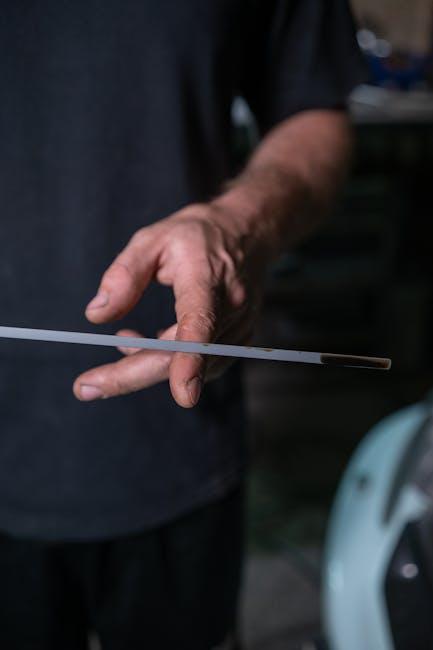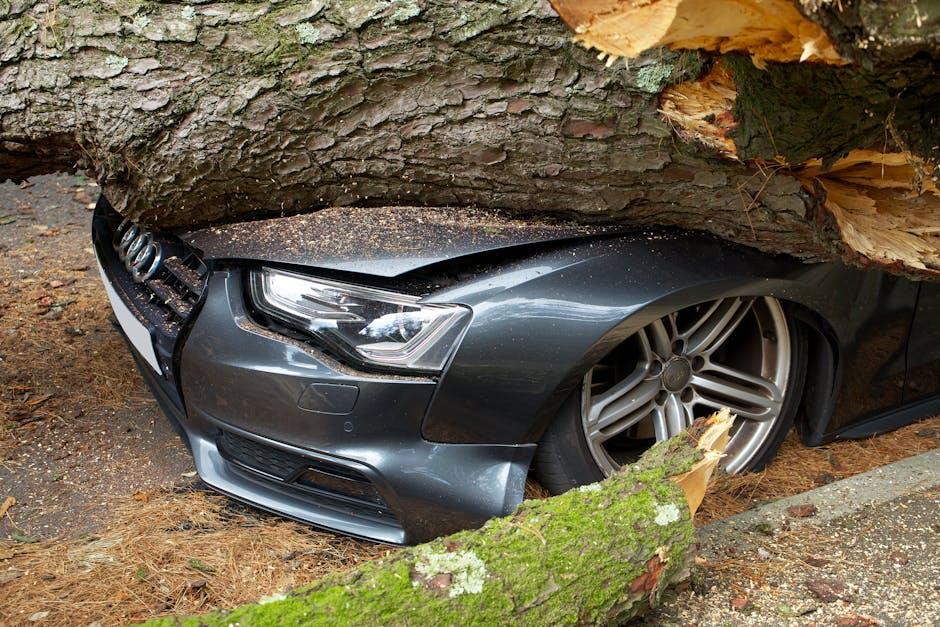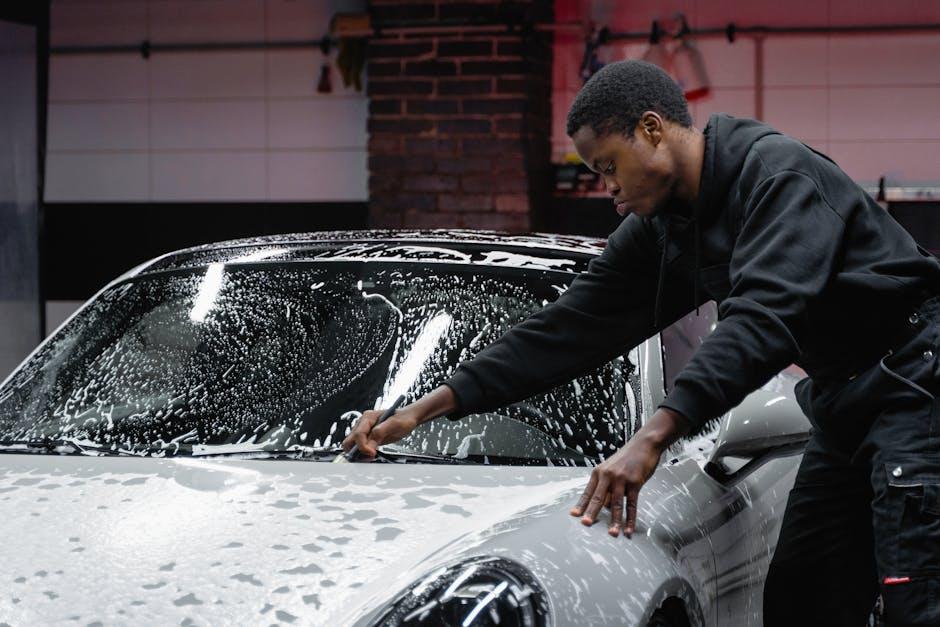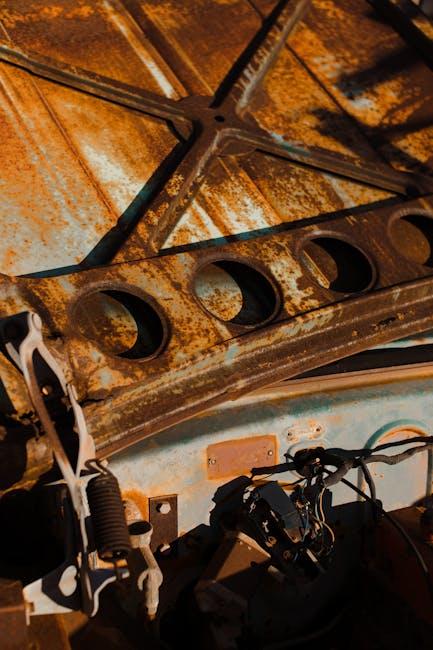There’s something about a car that mirrors its owner’s story — every scratch, every dent, and every stain tells a tale of adventures taken, roads traveled, and everyday moments lived. Yet, when stubborn stains cling stubbornly to your vehicle, they can overshadow those memories with frustration and a dash of embarrassment. Whether it’s a splash of mud from a weekend escape, a stubborn coffee spill from your morning commute, or an unexpected bird dropping, these blemishes can be surprisingly challenging to erase. In this article, we’ll explore practical, effective methods to tackle those pesky marks and restore your car’s finish to its original shine — proving that no stain is too tough when you know the right approach.
Table of Contents
- Identifying Different Types of Stubborn Car Stains
- Choosing the Right Cleaning Materials for Tough Spots
- Step-by-Step Techniques for Effective Stain Removal
- Natural Remedies Versus Commercial Cleaners
- Preventative Tips to Avoid Future Stains
- When to Seek Professional Detailing Assistance
- Q&A
- To Conclude

Identifying Different Types of Stubborn Car Stains
Before tackling those pesky marks, it’s crucial to recognize what you’re dealing with. Common stubborn stains come in many forms, each demanding a tailored approach for removal. Bird droppings, for example, are acidic and can erode paint if left unattended. Tree sap is sticky and often hardened, requiring solvents to break down its resinous nature. Meanwhile, tar spots are oily and cling tightly to surfaces, making them difficult to wipe away without proper products.
Understanding specific stains helps prevent damage during cleaning and ensures the best results. Here’s a quick reference to categorize and identify common stains on your vehicle:
| Type of Stain | Characteristics | Common Source |
|---|---|---|
| Bird Droppings | Acidic, white and yellow, rough texture | Birds |
| Tree Sap | Sticky, amber or brown, hardened over time | Trees |
| Tar Spots | Greasy, black or dark brown, stubborn | Roadwork and pavement |
| Bug Splatter | Organic residue, sometimes multi-colored | Insects |

Choosing the Right Cleaning Materials for Tough Spots
When tackling those stubborn car stains, the secret lies in selecting materials that blend effectiveness with safety. Avoid harsh abrasives that can scratch surfaces, and instead, opt for microfiber cloths or soft-bristle brushes designed specifically for automotive use. Their gentle touch ensures you won’t damage interiors or delicate paintwork while effectively dislodging dirt embedded deep in fabrics or crevices. Pair these with cleaning products that boast non-toxic, biodegradable ingredients—ideal for preserving your vehicle’s finish and the environment alike.
Knowing what’s best for different types of stubborn stains can save you time and frustration. Here’s a handy guide to match materials with typical tough spots:
- Grease and oil: Use an absorbent cloth and a degreasing agent formulated for cars.
- Ink and dye: Employ a gentle solvent with a cotton swab for precision.
- Mold and mildew: A vinegar-based cleaner and a soft brush work wonders.
- Tar and adhesives: Specialty tar removers combined with rubber spatulas can lift these without harm.
| Stain Type | Recommended Material | Tip |
|---|---|---|
| Grease | Microfiber cloth + degreaser | Blot, don’t rub |
| Ink | Cotton swab + solvent | Test in hidden spot first |
| Mold | Soft brush + vinegar solution | Ventilate well |
| Tar | Rubber spatula + tar remover | Work gently to avoid paint |

Step-by-Step Techniques for Effective Stain Removal
To tackle those tough car stains with precision, start by identifying the stain type—whether it’s grease, ink, or mud—as this affects the choice of cleaning agents. Begin by blotting the stain gently with a microfiber cloth to absorb any excess liquid without spreading it. Next, prepare a mild solution of warm water and car-safe detergent. Apply it to the stained area using a soft brush or sponge in circular motions to lift the dirt from the fabric or upholstery fibers. For oil-based spots, sprinkle a little baking soda or cornstarch, let it sit for 10 minutes, then vacuum it up to draw out the grease effectively.
When dealing with persistent or deep-set stains, repeating the cleaning process is key—patience often pays off. For extra stubborn marks, consider a specialist stain remover designed for automotive fabrics. Always test these products on a hidden spot first to avoid discoloration. Remember, finishing off with a clean, damp cloth rinse and allowing the area to air dry helps prevent residue buildup and keeps your car’s interior looking fresh. Below is a simple guide to common stain types and recommended treatments:
| Stain Type | Recommended Treatment |
|---|---|
| Grease/Oil | Baking soda + detergent solution |
| Ink | Rubbing alcohol + gentle blotting |
| Mud | Soft wet brush + detergent |
| Food & Drink | Vinegar-water mix + cloth blotting |

Natural Remedies Versus Commercial Cleaners
When tackling stubborn car stains, many turn to commercial cleaners, lured by their promise of quick results and powerful formulas. These products often contain synthetic chemicals designed to break down tough grime and oils with minimal elbow grease. While efficient, they may sometimes strip away protective coatings on your car’s surfaces or leave behind residues that attract new dirt. On the other hand, natural remedies offer a gentler approach, harnessing the cleaning power of everyday ingredients like vinegar, baking soda, and lemon juice. These eco-friendly alternatives reduce exposure to harsh chemicals and are often safer for the environment and your skin, though they might require a bit more patience and effort to achieve optimal results.
- Commercial Cleaners: Fast-acting, designed for specific stains, risk of damaging surfaces.
- Natural Remedies: Eco-friendly, safe, often multi-purpose but slower acting.
| Factor | Commercial Cleaners | Natural Remedies |
|---|---|---|
| Effectiveness | High, immediate | Moderate, gradual |
| Environmental Impact | Potentially harmful | Biodegradable |
| Cost | Varies, often higher | Low, household staples |
| Surface Safety | May cause damage | Gentle on materials |

Preventative Tips to Avoid Future Stains
Maintaining a clean car interior requires a proactive approach. Start by using seat covers and floor mats made from stain-resistant materials—they act as barriers, catching spills before they soak through. Keep a small cleaning kit handy, including microfiber cloths and gentle wipes, so you can address messes promptly. This immediacy can prevent stains from setting, saving you time and effort later.
Establish simple habits that blend seamlessly into your routine. Avoid eating or drinking in the car whenever possible, and if you do, opt for spill-proof containers. Regularly vacuuming removes crumbs and dirt that can cause stains or wear on your upholstery. Below is a quick reference guide showing the best preventative tools for common sources of stains:
| Source | Recommended Preventative Tool | Key Benefit |
|---|---|---|
| Food & Drinks | Spill-proof tumblers & trays | Reduces accidental spills |
| Dirt & Mud | Removable rubber floor mats | Easy cleaning & protection |
| Pet Hair & Mess | Waterproof seat covers | Protects fabric & easy wipe down |

When to Seek Professional Detailing Assistance
When stubborn stains refuse to budge despite your best DIY efforts, it might be time to call in the pros. Professional detailers have access to advanced tools and specialized cleaning agents that are gentle on your car’s surfaces but tough on dirt and grime. Their expertise allows them to identify the type of stain and choose the most effective removal method, reducing the risk of damage to your paint, upholstery, or interior trim.
Consider professional help if you encounter:
- Deep-set stains like tar, tree sap, or paint overspray
- Delicate or rare interior materials that require expert care
- Persistent odors linked to mildew or smoke embedded in the fabric
- Unfamiliar or chemical-based stains where DIY attempts could worsen the problem
| Stain Type | DIY Difficulty | Pro Detailing Benefit |
|---|---|---|
| Paint Overspray | High | Specialized solvents and polishing |
| Mildew Odor | Medium | Ozone treatment and deep cleaning |
| Tree Sap | High | Safe sap removal products and techniques |
Q&A
Q&A: How to Remove Stubborn Car Stains
Q1: What types of stains are considered the most stubborn on car interiors?
A1: The usual suspects include coffee spills, grease spots, ink marks, and sweaty fingerprints. These stains tend to seep deep into fabric or leather, making them tricky to remove without the right tools and techniques.
Q2: Can I use household products to clean stubborn car stains?
A2: Yes, many household items like vinegar, baking soda, and dish soap can work wonders. However, it’s important to test them on a small, hidden area first to avoid damage or discoloration to your car’s interior.
Q3: What’s the first step before tackling any tough stain?
A3: Start by gently blotting the stain with a clean cloth to absorb as much of the spill as possible. Avoid rubbing, as it can push the stain deeper or spread it around.
Q4: Are there specialized products better than home remedies?
A4: Absolutely. Automotive upholstery cleaners and stain removers are formulated specifically for car interiors, balancing power with gentleness. They often contain enzymes or agents that break down organic stains without harming surfaces.
Q5: How do I get rid of grease or oil stains?
A5: Sprinkle some baking soda or cornstarch over the stain and let it sit for 15-30 minutes to absorb the oil. Then vacuum it up and follow with a gentle cleaner suited for your car’s material.
Q6: Is it safe to use water on leather seats?
A6: Minimal water is okay, but too much can damage leather. Use a damp cloth with a leather cleaner or conditioner, and avoid harsh scrubbing. Always finish by drying with a soft towel.
Q7: How can I prevent stubborn stains from forming in the first place?
A7: Regular cleaning and quick action on spills are your best defenses. Using protective sprays or seat covers can also be a great preventive measure, keeping your interior fresh and stain-resistant.
Q8: When should I consider professional cleaning?
A8: If a stain refuses to budge after home treatments, or if your car’s upholstery is delicate and valuable, consulting a professional detailer ensures expert care without risking permanent damage.
This Q&A offers practical, balanced advice to help anyone wrestle with stubborn car stains with confidence and care.
To Conclude
Removing stubborn car stains might seem like a daunting task, but with the right approach and a little patience, your vehicle can regain its pristine look. Whether it’s coffee, grease, or those mysterious marks that appear out of nowhere, the key lies in choosing the right method and products for each type of stain. Remember, regular maintenance and prompt attention to spills can save you time and effort in the long run. So roll up your sleeves, follow these steps, and drive away confidently in a car that looks as good as new.

